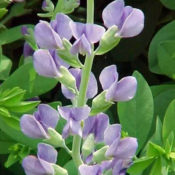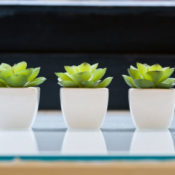August should be a lazy time for gardeners, spent gleefully snipping flowers for bouquets or harvesting arms full of vegetable produce, with plenty of hammock time thrown in. But that’s only part of this month’s picture. Although the heat of the dog days may slow us down a bit, there is still plenty of work for August gardeners.
Weeding—Don’t let the weeds get away from you. The more you remove before they develop seeds this time of year, the better for next year’s garden. Remember to keep your asparagus patch well weeded, too, but allow their fern tops to grow so they can feed the crown below ground.
Trimming—Continue to shear back leggy annuals and remove spent blossoms of zinnias and other flowers to spur new bud growth.
Transplanting—When daylilies have faded, you can divide them and replant at will. Hostas may also be divided at any time. Late August is also the time for dividing and transplanting peonies and bearded iris.
Seed Harvesting—Remove the seed heads of self-seeding flowering plants such as larkspurs after the plants have faded. Resow the seeds any time until heavy frost.
Pinching—Pinch back basil and other herb flowers to keep them producing, and trim herbs such as summer savory and marjoram for a nice full bush.
Planting—In some areas there may still be time to add bush beans or start new rows of chard, radishes, arugula, spinach, turnips, beets, or lettuce for fall crops.
Fill in bare spots in flower beds with flowering plants such as crocosima and phlox, available now at nurseries and supermarkets.
This is also the time to plant fall-blooming bulbs—fall crocus and autumn crocus (Cochicum) that will provide showy flowers September through October. Fall-blooming crocuses are true crocus plants that happen to bloom in the fall. They include C. banaticus, light to dark purple and resembling an iris, hardy into zone 4, C. hadriacticus, hardy into zone 5, and C. sativus, the saffron crocus (most expensive), purple-flowered with orange stigmas that’s hardy into zone 5.
Colchicums, “autumn crocus,” bloom like giant crocus blossoms, but are actually a separate genus. They prefer rich, well-drained compost and grow in full or partial sun. Varieties include C. agrippinum, checkered, pink-purple flowers; C. byzantium, rosy white petals dating from the 16th century; and C. speciosum, a violet colored tulip look-alike.
With a moderate amount of upkeep, you can maintain a vibrant and colorful garden through the hottest days of summer and long into the fall.
Become a Saturday Evening Post member and enjoy unlimited access. Subscribe now




Comments
Just reading this tires me out.
Identify most with the reclining gardener.